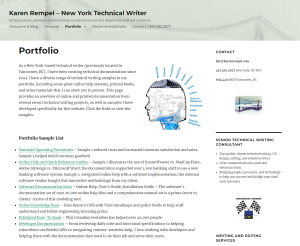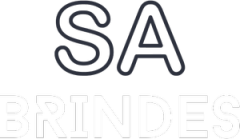Creating an exceptional technical writing portfolio can be a challenging task, but it is a necessary undertaking for any aspiring or professional technical writer. This portfolio will serve as your showcase, presenting your skills, knowledge, and experience in a neatly organized package to potential clients or employers. An impressive portfolio is like a compelling story about your professional journey, demonstrating your ability to simplify complex information and make it accessible to a wide range of audiences. Here is a guide, alongside five inspiring examples, to assist you in crafting the perfect portfolio.
Firstly, the portfolio of ‘TechWriterX’ sets a high standard. Their portfolio is filled with diverse samples, ranging from user manuals to API documentation, illustrating their versatility and ability to write for various industries. The portfolio is arranged in a clear, easy-to-navigate format, making it effortless for visitors to find and review the writer’s work.
Secondly, ‘DocsGuru’ has a portfolio that reflects their expertise in creating software documentation. It showcases their skills in crafting comprehensive guides, tutorials, and FAQs that help users navigate software applications efficiently. Their portfolio also includes a section on their process, providing insight into their work ethics and methodology.

The third example is from ‘WriteTechPro,’ who has a portfolio that focuses on their experience in the tech industry. They have included samples of their work in creating hardware manuals, software guides, and even troubleshooting documents. The portfolio also includes testimonials from satisfied clients, lending credibility to their work.
Fourth on our list is ‘TechnoWordsmith.’ Their portfolio stands out for its unique feature: case studies. These case studies provide an in-depth look into their projects, detailing the writing process, challenges faced, and how they overcame them. This approach gives potential clients a clear picture of their problem-solving skills and dedication to delivering high-quality work.
Lastly, ‘ScriptTech’ has a portfolio that is visually appealing and highly interactive. They have integrated the use of infographics and videos in their samples, demonstrating their ability to create engaging and easy-to-understand technical content. Additionally, their portfolio also includes a blog section where they share insights and tips on technical writing, reflecting their passion and commitment to their craft.
In conclusion, a well-crafted technical writing portfolio is not just a collection of work samples. It is a representation of your professional identity, demonstrating your skills, expertise, and approach to work. By taking inspiration from these examples, you can create a portfolio that not only showcases your best work but also tells your unique professional story. Whether you’re an established writer or just starting, having an outstanding portfolio is a crucial tool in securing new opportunities and charting your growth in the field of technical writing.
Defining the Role of a Technical Writer
A technical writer is responsible for crafting clear, concise, and comprehensive documentation that communicates complex ideas or procedures in a simple, easy-to-understand manner. This includes writing user manuals, FAQs, how-to guides, system requirements, and other technical information. They often work closely with engineers, product managers, and other specialists to ensure that they fully understand the product or process they are documenting. The role of a technical writer also involves conducting thorough research, understanding the needs of the target audience, and tailoring the content to meet those needs. They are expected to have excellent writing skills, a keen eye for detail, and the ability to simplify complex concepts.
While technical writers might not be involved in the creation of a product or system, they play a crucial role in making that product or system accessible and understandable to end-users. This role often requires a balance of technical knowledge and writing expertise. The goal is to minimize confusion and increase user satisfaction by providing clear and precise information. The role of a technical writer is thus a vital link between product developers and consumers, translating the language of the former into something that the latter can easily comprehend and use. Technical writers are the bridge that connects complex technical information to the end-users, ensuring that products and systems are utilized to their maximum potential.
What Constitutes a Technical Writing Portfolio?
A technical writing portfolio is a collection of documents that demonstrate a writer’s competency in communicating complex information in an easily understandable way. This portfolio should ideally contain a diverse range of work samples such as user manuals, project proposals, white papers, standard operating procedures, software documentation, how-to guides, and technical reports among others. The purpose of this portfolio is not only to showcase the writer’s ability to write clear and concise technical information, but also to highlight their skills in research, problem-solving, and project management.
The content selected for inclusion should ideally cover a broad spectrum of topics, showcasing the writer’s ability to handle a diverse array of subjects. It should also display the writer’s skill in adapting to different writing styles and tones, as per the requirements of the project or the target audience. In addition to this, the portfolio should also provide evidence of the writer’s proficiency in using different tools and software commonly used in technical writing, such as Microsoft Office Suite, Adobe Acrobat, SnagIt, and specialized software like MadCap Flare or RoboHelp.
In constructing a technical writing portfolio, it is important to remember that quality trumps quantity. Each piece included should be carefully curated and showcase the best of the writer’s abilities. Furthermore, each sample should be accompanied by a succinct context-setting paragraph, explaining the purpose of the document, the intended audience, and the writer’s role in creating it. This helps potential employers or clients understand the scope of the writer’s work and their ability to deliver within specific parameters.
Thus, a technical writing portfolio is a vital tool for professional technical writers, serving as a testament to their skills, versatility, and expertise in the field.

Key Components to Feature in Your Technical Writing Portfolio
Your technical writing portfolio is your professional showcase, displaying your ability to communicate complex ideas in a clear, concise manner. It’s crucial to include various samples that demonstrate your versatility across different industries and formats. Start with your best work that exemplifies your skills in organizing and presenting technical information. This could include user manuals, software documentation, whitepapers, or reports. Make sure to feature pieces that highlight your aptitude for explaining intricate concepts to non-technical audiences, as this ability is highly valued in the field.
Next, include examples of your proficiency in using different tools and technologies essential for technical writing. This could manifest in the form of interactive online help systems, API documentation, or even video tutorials. Showcasing your familiarity with software such as MadCap Flare, Adobe FrameMaker, or Snagit can give potential employers a clear idea of your technical prowess.
In addition, your portfolio should demonstrate your research skills. Technical writing often involves learning about new topics and translating them into understandable language. Including a sample where you’ve successfully done this can illustrate your ability to grasp and communicate new concepts effectively.
Finally, don’t forget to highlight your attention to detail and proofreading skills. These are vital in technical writing where precision is paramount. This could involve including a before-and-after edit of a piece, showing your ability to refine and polish written content.
Remember, your portfolio is not static. It should evolve with your career, incorporating new pieces that reflect your growth and the current trends in technical writing. This will ensure that it remains relevant and continues to represent your abilities accurately.
5 Exemplary Technical Writing Portfolios to Inspire You
Exploring the world of technical writing can be an enlightening experience, especially when you have the chance to delve into outstanding portfolios that showcase exemplary skills and expertise. These portfolios serve as a source of inspiration for those who aspire to excel in this field. One such portfolio is that of Tom Johnson, an experienced technical writer whose work focuses on API documentation, showcasing how complex technical information can be articulated in a reader-friendly manner. Another source of inspiration is Sarah Maddox, a technical writer who also specializes in API documentation. Her portfolio displays a plethora of case studies and articles that provide insightful information about the industry.
If you are more into software documentation, the portfolio of Neal Kaplan might catch your attention. He has a vast experience in writing for big names like Google and Intuit. On the other hand, if you are interested in writing for the medical industry, the portfolio of Elizabeth Fraley can provide inspiration. She has over 20 years of experience in writing for the medical and semiconductor industries. Lastly, Leah Guren’s portfolio is worth exploring, especially for those interested in user experience (UX) writing. She is a technical writing consultant with over 30 years of experience, and her portfolio reflects her proficiency in this field. These five portfolios are just a few examples of the depth and breadth of technical writing, demonstrating how this skill can be applied across various industries and disciplines.

Ready to Create Your Own Technical Writing Portfolio?
Creating your own technical writing portfolio can be an empowering and beneficial endeavor. This portfolio will serve as the platform to showcase your writing style, your ability to explain complex concepts clearly, and your eye for detail. Whether you are a seasoned technical writer seeking new opportunities or a novice aiming to break into the industry, having a well-crafted portfolio can significantly boost your professional credibility.
When building your portfolio, it’s important to include a diverse selection of works. This could range from user manuals, project proposals, white papers, help documents, to case studies. This diversity will allow potential employers or clients to see your versatility and adaptability in handling different formats and topics. It’s also beneficial to provide context for each piece, such as the project’s goals, your role in it, and the impact of your work.
However, creating a portfolio is not only about showcasing your past works. It’s also an opportunity for you to demonstrate your understanding of the technical writing principles and standards. This could be reflected in the portfolio’s design and organization, the clarity and conciseness of your writing, and your ability to present information in a user-friendly manner.
Finally, don’t forget to keep your portfolio updated. As you gain more experience and hone your skills, your portfolio should evolve as well. By regularly reviewing and refining your portfolio, you can ensure that it always reflects your best work and current capabilities. Hence, if you’re ready to create your technical writing portfolio, remember that it’s not a one-time task, but a continuous process of showcasing your growth and proficiency in technical writing.
